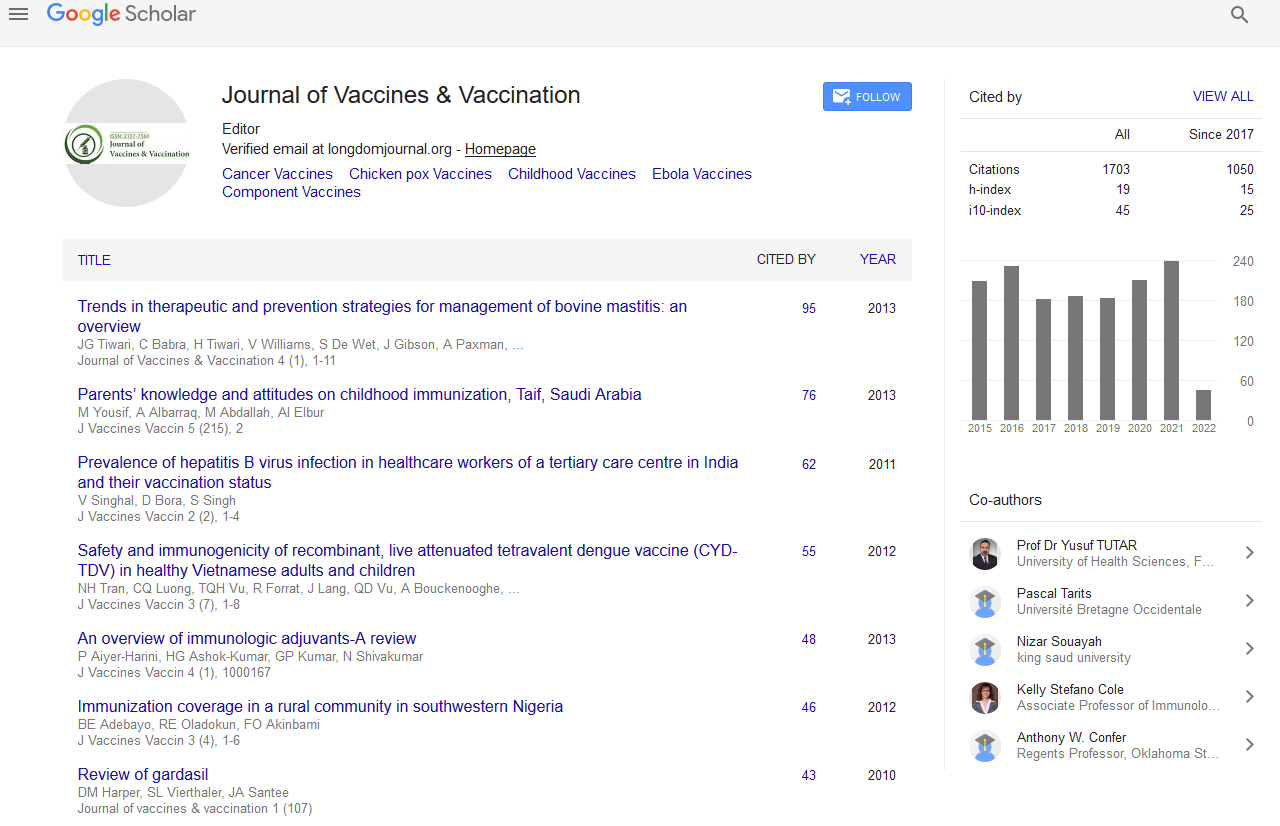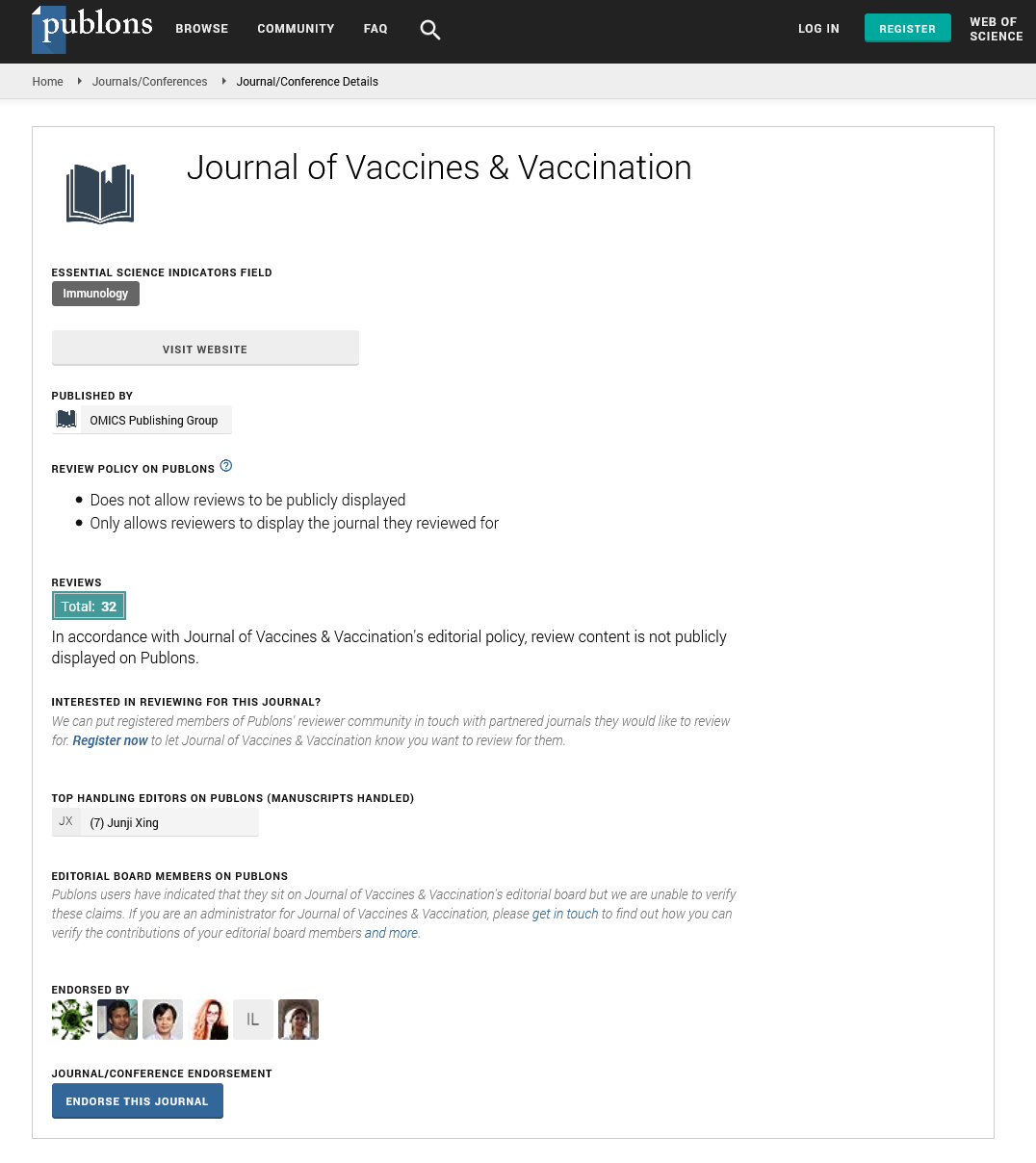PMC/PubMed Indexed Articles
Indexed In
- Academic Journals Database
- Open J Gate
- Genamics JournalSeek
- JournalTOCs
- China National Knowledge Infrastructure (CNKI)
- Scimago
- Ulrich's Periodicals Directory
- RefSeek
- Hamdard University
- EBSCO A-Z
- OCLC- WorldCat
- Publons
- MIAR
- University Grants Commission
- Geneva Foundation for Medical Education and Research
- Euro Pub
- Google Scholar
Useful Links
Share This Page
Open Access Journals
- Agri and Aquaculture
- Biochemistry
- Bioinformatics & Systems Biology
- Business & Management
- Chemistry
- Clinical Sciences
- Engineering
- Food & Nutrition
- General Science
- Genetics & Molecular Biology
- Immunology & Microbiology
- Medical Sciences
- Neuroscience & Psychology
- Nursing & Health Care
- Pharmaceutical Sciences
Replication competent viral vectors for vaccine development
9th Global Summit and Expo on Vaccines & Vaccination
November 30-December 02, 2015 San Francisco, USA
Farshad Guirakhoo
Vaxess Technologies, USA
Posters-Accepted Abstracts: J Vaccines & Vaccin
Abstract:
Viral infections account for 15 million deaths per year, one-third of all mortalities worldwide. The most effective medical approach to combat viral diseases and reduce deaths is vaccinations, which have less adverse side effects than drugs while inducing longer lasting protection from re-infection. Live attenuated, inactivated, or subunit vaccine approaches have been successfully utilized to combat mortalities caused by infectious diseases such as yellow fever, varicella, measles, mumps, rubella, influenza, smallpox, polio, rabies, hepatitis A and B and human papilloma virus. Viruses themselves have also been used as vectors (either replication competent or replication deficient) for development of vaccines against both infectious and non-infectious diseases. The most important factor in the construction of effective viral vectors is finding the right balance between safety and immunogenicity. Although live viral vaccine vectors are highly efficacious, there is also a greater potential risk involved with their broader usage because they are replication-competent. Vaccines based on replication-incompetent viruses are perceived to be safer but there is not yet any vaccine on the market for human use. In this talk, characteristics of both replication-deficient and replication-competent viral vectors and barriers for their developments will be discussed. The talk will specifically focus on a few vector examples that have either generated marketed products or have successfully completed their phase 3 efficacy trials.
Biography :
Email: farshad.guirakhoo@gmail.com


